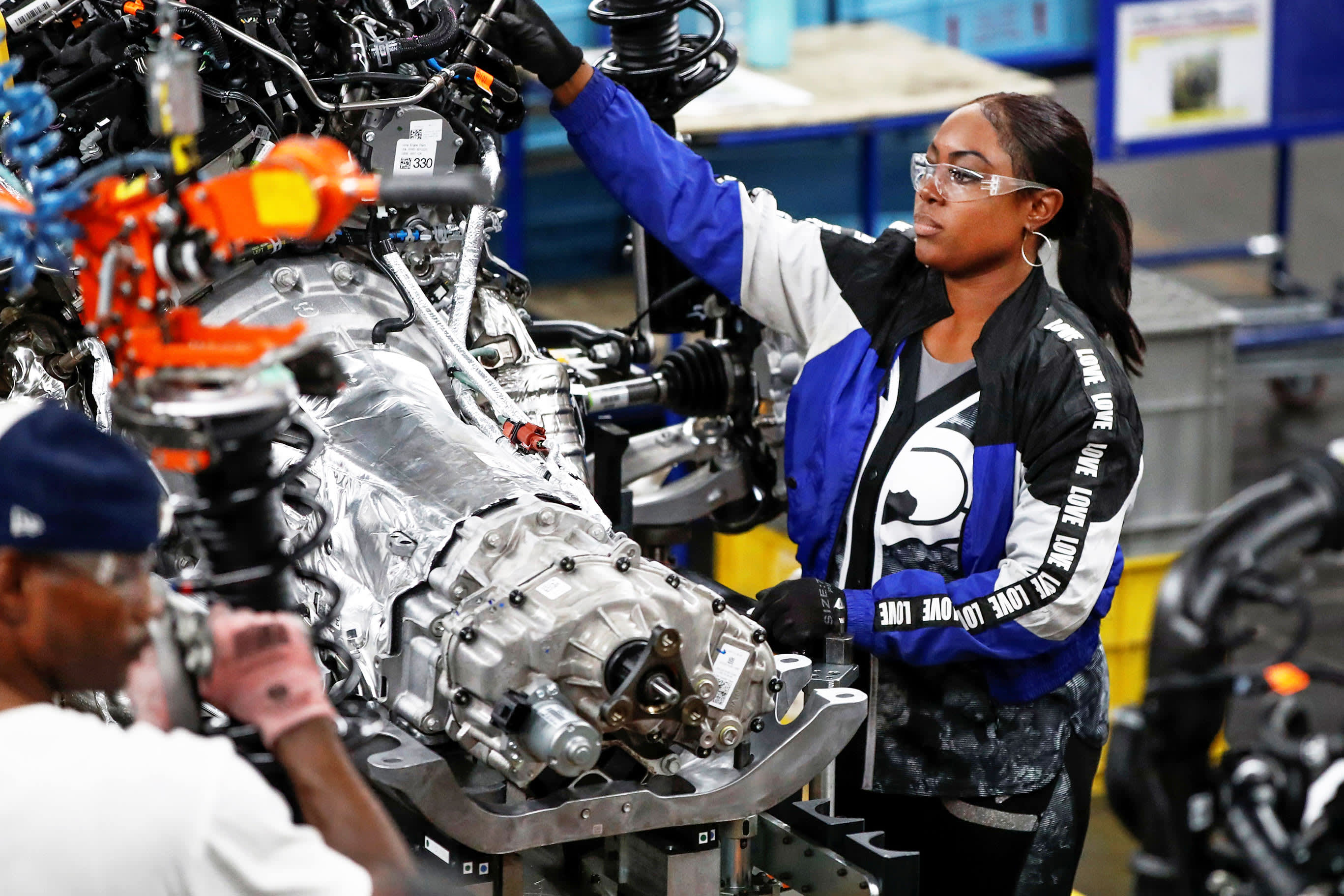
WASHINGTON — An unseasonably mild January helped power the U.S. jobs market to more gains, with nonfarm payrolls rising 225,000 for the month, well above Wall Street estimates.
The unemployment rate ticked higher to 3.6%, but for the right reason as the labor force participation rate increased 0.2 percentage points to 63.4%, matching its highest level since June 2013, according to data released Friday by the Labor Department.
Economists surveyed by Dow Jones were looking for payroll growth of 158,000 and the jobless rate to stay at 3.5%, its lowest in more than 50 years.
A more encompassing labor market indicator that includes discouraged workers and those holding part-time positions for economic reasons also moved higher, rising 0.2 percentage points to 6.9%. The so-called real unemployment rate previously had been at its lowest level in the history of the data series.
However, the employment-to-population ratio in the household survey rose to 61.2%, its highest since November 2008 and 0.5 percentage points higher than a year ago.
A worker builds a 2020 Ford Explorer car at Ford's Chicago Assembly Plant in Chicago, June 24, 2019.
Kamil Krzaczynski | Reuters
The weather-sensitive construction industry led the way in job creation, adding 44,000 positions, well above its 2019 average of 12,000.
Manufacturing, which has been in a months-long slump, saw a loss of 12,000 positions, owing almost completely to a drop in motor vehicles and parts.
Leisure and hospitality, another sector also impacted by weather, added 36,000, as did health care. Professional and business services grew by 21,000, bringing to 390,000 the number of jobs the sector has added. Transportation and warehousing increased by 28,000.
Wages rise
There was more good news for workers: Average hourly earnings rose 3.1% over a year ago to $28.44, ahead of estimates for 3% growth. That marked 18 consecutive months of wage gains above 3%, as the initially reported 2.9% for December was revised up to 3%.
The average work week was unchanged at 34.3 hours.
Previous months' revisions also gave a slight boost to the jobs count. November's estimate rose 5,000 to 256,000 while December was moved up 2,000 to 147,000.
There was one piece of bad news as well pertaining to benchmark revisions the department incorporates into its historical count. This year showed a decline in the total nonfarm employment for the year ending March 2019 of 514,000. That was a bit higher than the 500,000 that economists had expected and were indicated back in August.
The downward revision amounted to 0.3%, higher than the usual plus-or-minus 0.2% change.
The household survey also was weaker than the establishment survey used to tabulate the unemployment rate.
Households actually reported a decline of 89,000 in the employment level, owing to a plunge in full-time workers of 656,000 and a jump in part time of 537,000.
The household data is noisy, however, and often veers from the establishment set. While the total employment level in the survey dropped over the month, those counted as outside the labor force slid by 729,000 and the total size of the labor force increased by 50,000 to 164.6 million.
The unemployment rate for African Americans rose one-tenth of a percentage point to 6%, while the rate for Asians leaped from 2.5% to 3% and the Hispanic level edged higher to 4.3%.
The Bureau of Labor Statistics tweaked a few of its indicators, with change being the inclusion of same-sex couples in its employment tabulations for married workers. The unemployment rate for married men ticked higher to 1.7% from 1.6%, while that for married women was unchanged at 2.1%.
https://news.google.com/__i/rss/rd/articles/CBMiRWh0dHBzOi8vd3d3LmNuYmMuY29tLzIwMjAvMDIvMDcvdXMtbm9uZmFybS1wYXlyb2xscy1qYW51YXJ5LTIwMTkuaHRtbNIBSWh0dHBzOi8vd3d3LmNuYmMuY29tL2FtcC8yMDIwLzAyLzA3L3VzLW5vbmZhcm0tcGF5cm9sbHMtamFudWFyeS0yMDE5Lmh0bWw?oc=5
2020-02-07 13:30:00Z
52780594720537
Bagikan Berita Ini














0 Response to "January adds a much stronger-than-expected 225,000 jobs, with a boost from warm weather - CNBC"
Post a Comment